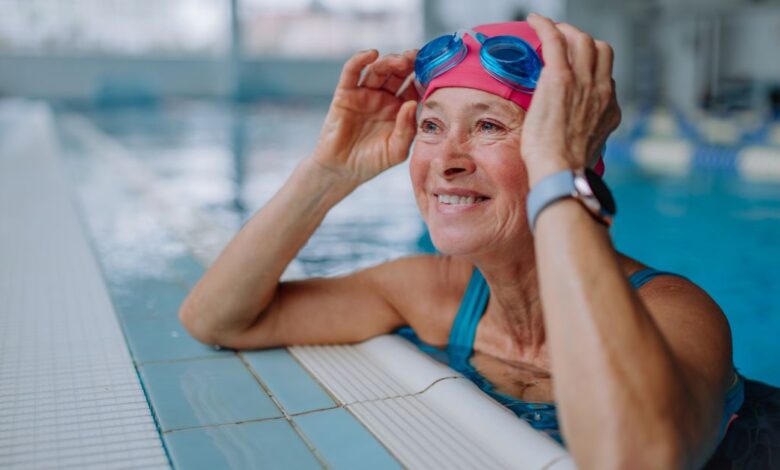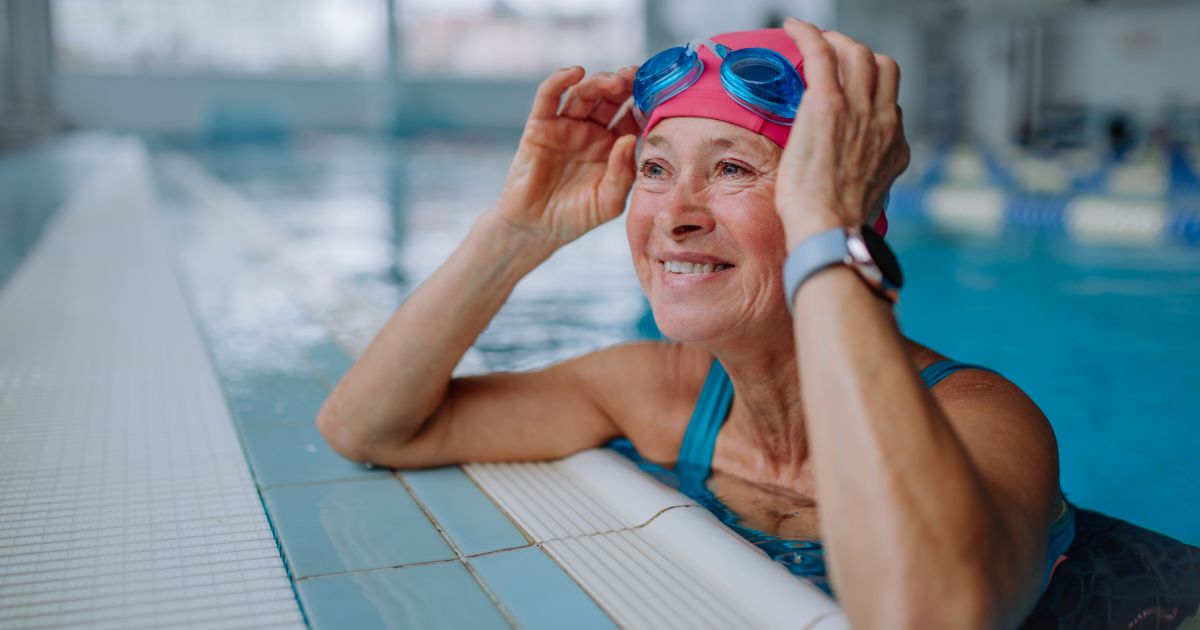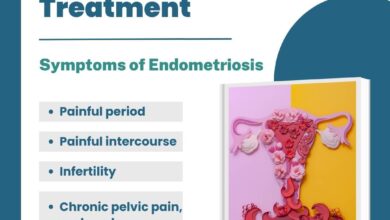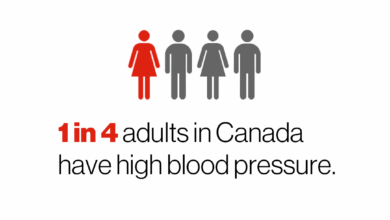
Exercise can help women with rheumatoid arthritis, offering a powerful path to managing symptoms and improving overall well-being. Rheumatoid arthritis (RA) can significantly impact a woman’s daily life, causing pain, stiffness, and fatigue. However, regular exercise, tailored to individual needs, can be a crucial tool in mitigating these challenges. From gentle stretches to invigorating cardio, various exercise types can help manage pain, boost energy, and enhance quality of life.
This comprehensive guide explores how exercise can benefit women with RA, delving into different exercise types, considerations for personalized programs, and practical recommendations for building a sustainable routine. We’ll also touch on the importance of diet and how it interacts with exercise in managing RA symptoms effectively.
Introduction to Exercise for Rheumatoid Arthritis in Women
Rheumatoid arthritis (RA) is a chronic autoimmune disease that primarily affects women. It causes inflammation in the joints, leading to pain, stiffness, and swelling. This inflammation can progressively damage the joint tissue, potentially resulting in long-term disability if not managed effectively. Women are disproportionately affected by RA, and the disease often significantly impacts their quality of life.The impact of RA extends beyond the physical pain and limitations.
Daily tasks that many take for granted, like dressing, cooking, or even simple chores, can become challenging or impossible. The fatigue associated with RA can also make it difficult to engage in activities, further hindering daily life and overall well-being. Understanding the impact of RA on physical function is critical for developing effective strategies to manage the disease and maintain an active lifestyle.
General Benefits of Exercise for Women with RA
Regular exercise offers numerous benefits for overall health, and these benefits are particularly crucial for women living with RA. Exercise strengthens the cardiovascular system, improves bone density, and boosts the immune system. These positive effects translate into reduced risk of heart disease, osteoporosis, and other age-related conditions. Moreover, exercise can help manage weight, a factor often impacted by RA medications and lifestyle choices.
Maintaining a healthy weight can lessen stress on affected joints and improve overall physical function.
How Exercise Can Positively Influence RA Symptoms
Exercise can play a vital role in managing RA symptoms. Gentle, low-impact activities can help reduce pain and stiffness, improve joint flexibility, and increase range of motion. Regular exercise can also enhance mood and reduce fatigue, both of which are frequently associated with RA. It’s important to remember that consistency and proper guidance are key to experiencing these benefits.
Different Types of Exercise for RA
Understanding the different types of exercise can help women with RA choose activities that are safe and effective for their individual needs. The key is to find exercises that minimize joint stress while promoting overall health.
| Type of Exercise | Benefits | Examples |
|---|---|---|
| Aerobic Exercise | Improves cardiovascular health, strengthens the heart, and helps manage fatigue. Low-impact options are crucial to avoid exacerbating joint pain. | Walking, swimming, cycling (stationary or outdoors), water aerobics, elliptical training. |
| Strength Training | Builds muscle strength, improves bone density, and supports joint stability. Light weights and resistance bands are often recommended. | Using resistance bands, light weights, bodyweight exercises like squats and lunges (modified as needed), chair exercises. |
| Flexibility and Range of Motion Exercises | Improves joint flexibility, reduces stiffness, and enhances range of motion. Gentle stretches are essential to avoid straining joints. | Yoga (modifications for RA are often available), tai chi, gentle stretching routines, range-of-motion exercises. |
Types of Exercise Beneficial for RA in Women: Exercise Can Help Women With Rheumatoid Arthritis
Understanding the right types of exercise is crucial for managing rheumatoid arthritis (RA) in women. A tailored exercise program can significantly improve joint function, reduce pain, and enhance overall well-being. This approach allows women to lead more active and fulfilling lives despite the challenges of RA.Effective exercise programs for RA in women often incorporate a variety of strategies.
The key is finding activities that are both enjoyable and manageable within the individual’s physical limitations. The types of exercises can be broadly categorized into low-impact, strength training, and cardiovascular exercises. Each plays a vital role in mitigating the symptoms of RA.
Low-Impact Exercises
Low-impact exercises are essential for women with RA. These activities put minimal stress on the joints, reducing the risk of exacerbating pain and inflammation. Examples include swimming, water aerobics, walking, and cycling. These activities help maintain mobility and improve cardiovascular health without placing excessive strain on affected joints. Consistent participation in low-impact activities can contribute significantly to the overall management of RA.
Strength Training
Strength training is crucial for maintaining muscle mass and bone density, which are often compromised in women with RA. Exercises that target specific muscle groups, such as resistance band exercises, light weightlifting, or chair-based exercises, can help strengthen supporting muscles around joints. This support can lessen the impact on joints, thus reducing pain and improving stability. It’s important to begin with lighter weights and gradually increase the intensity as tolerated.
Cardiovascular Exercises
Cardiovascular exercises are important for maintaining overall health and well-being, particularly for women with RA. Activities like walking, swimming, cycling, and elliptical training help improve cardiovascular fitness, increase endurance, and boost energy levels. Consistent cardiovascular exercise can also help manage weight, which is often a concern for individuals with RA. Proper guidance and starting slowly is key to avoiding exacerbating symptoms.
Comprehensive Exercise Table
| Exercise Type | Description | Benefits | Precautions |
|---|---|---|---|
| Swimming | Gentle exercise in water; minimal impact on joints. | Excellent for cardiovascular health, joint pain relief, and muscle strengthening. | Ensure proper breathing techniques and body alignment. |
| Water Aerobics | Aerobic exercises performed in water; low-impact. | Combines cardiovascular exercise with joint support, easing pain and promoting flexibility. | Start with shorter durations and gradually increase. |
| Walking | Low-impact exercise using legs. | Easy to incorporate into daily routine; improves cardiovascular health and reduces stress on joints. | Choose appropriate footwear and consider uneven surfaces. |
| Cycling | Exercise using a bicycle, either stationary or outdoor. | Good for cardiovascular health and lower body strengthening; less stress on joints than running. | Maintain correct posture and use appropriate seat height. |
| Resistance Band Exercises | Using elastic bands for resistance training. | Effective for strengthening muscles around joints; suitable for various fitness levels. | Use proper form and start with lighter resistance. |
| Light Weightlifting | Lifting weights of appropriate intensity for strengthening muscles. | Increases muscle mass and bone density; improves joint stability. | Proper form is crucial to avoid injuries; start with low weight. |
| Chair-based Exercises | Exercises performed while seated on a chair. | Easy to adapt to different fitness levels and conditions; suitable for people with limited mobility. | Consult a physical therapist to create a safe and effective routine. |
| Elliptical Training | Using an elliptical machine for cardiovascular exercise. | Low-impact cardio exercise that engages multiple muscle groups. | Proper form is vital to avoid injuries. |
Exercise Considerations for Women with RA
Finding the right exercise routine for rheumatoid arthritis (RA) can feel like navigating a maze. It’s crucial to tailor your workout to your individual needs and limitations, acknowledging the unique challenges RA presents. This personalized approach, combined with proper guidance and consistent effort, can significantly improve your well-being and quality of life.Personalized exercise programs are essential for women with RA.
A one-size-fits-all approach rarely works. Different individuals experience varying degrees of joint pain, stiffness, and fatigue. A personalized program, developed in consultation with a healthcare professional, takes these factors into account, ensuring the exercises are safe and effective for the specific needs of each woman. This approach maximizes benefits and minimizes risks.
Staying active is crucial for women with rheumatoid arthritis, boosting their overall well-being. While exercise helps manage pain and fatigue, it’s also worth noting that a healthy diet, including lots of fruits and vegetables, might contribute to a more pleasant aroma. For more on the link between diet and body odor, check out this interesting article on how eating fruits and vegetables might smell better if you eat fruits and vegetables.
Ultimately, a combination of regular exercise and a nutritious diet can make a significant difference in managing rheumatoid arthritis symptoms and feeling great.
Importance of Professional Guidance
Consulting a healthcare professional before starting any exercise routine is paramount for women with RA. A doctor or physical therapist can assess your current health status, including the severity of your RA, and identify any potential complications. They can also help you understand how RA may affect your ability to exercise and provide valuable advice on exercises that are appropriate for your condition.
This personalized approach prevents potential harm and ensures optimal results.
Starting Slowly and Gradually Increasing Intensity
It’s crucial to start slowly and gradually increase the intensity of your exercise routine. Pushing yourself too hard, too soon, can exacerbate pain and inflammation. A gradual approach allows your body to adapt to the new demands, minimizing the risk of injury and maximizing your comfort. Begin with short durations of activity and progressively increase the duration and intensity as your body adapts.
This approach fosters consistency and minimizes the risk of burnout.
Rest and Recovery in Exercise Routines
Rest and recovery are integral parts of any exercise program, especially for women with RA. Allowing your body adequate time to rest and recover between workouts is crucial for preventing excessive inflammation and promoting healing. Listen to your body’s signals; if you feel pain or fatigue, take a break. Proper rest and recovery are vital for long-term adherence to the exercise program and minimizing potential setbacks.
High-Impact vs. Low-Impact Exercises
| Exercise Type | Description | RA-Specific Considerations |
|---|---|---|
| High-Impact | Exercises that involve a significant amount of force on the joints, like running or jumping. | Generally less suitable for individuals with significant joint pain or inflammation. Can cause increased pain and exacerbate RA symptoms if not performed carefully and with appropriate precautions. |
| Low-Impact | Exercises that place minimal stress on the joints, such as swimming, walking, or cycling. | Often more suitable for individuals with RA, as they minimize stress on affected joints. Can still be effective in improving cardiovascular health and strength without exacerbating RA symptoms. |
Careful consideration of the impact level is vital when choosing exercises for RA. Low-impact exercises, often gentler on the joints, are typically preferred. However, individual needs and limitations should be the primary determinant. Consult with a healthcare professional to determine the most appropriate exercise types and intensity levels.
Specific Exercise Recommendations
Knowing the right exercises for rheumatoid arthritis (RA) is crucial for managing symptoms and maintaining quality of life. Tailoring exercises to individual needs and the stage of RA is vital. This section provides specific recommendations for various stages and focuses on improving flexibility, strength, balance, and aerobic capacity, all while respecting the limitations imposed by RA.Effective exercise programs for women with RA consider the fluctuating nature of the disease.
Different stages of RA may necessitate varying exercise intensities and types. This individualized approach ensures that exercise routines are safe, effective, and sustainable.
Exercises for Different Stages of RA
Exercise recommendations should be adapted based on the severity and activity level of the RA. Early stages of RA might focus on gentle movement and low-impact activities to build a foundation of exercise tolerance. As the disease progresses, exercises should continue to be tailored to maintain and improve joint function and overall well-being. Proper progression of exercise is key to prevent exacerbations and ensure sustained improvement.
Flexibility Exercises for Women with RA
Maintaining flexibility is essential for pain management and joint function. Specific flexibility exercises are designed to improve range of motion and reduce stiffness. Careful consideration of joint pain and fatigue is crucial.
| Exercise | Description | Precautions |
|---|---|---|
| Gentle Arm Stretches | Slowly raise one arm overhead, keeping the elbow straight. Gently pull the hand towards the head, maintaining a comfortable stretch. Repeat on the other side. | Avoid forceful movements. Stop if pain increases. |
| Leg Stretches | Extend one leg straight out in front of you, keeping the knee straight. Gently lean forward from the hips, maintaining a comfortable stretch in the hamstring. Repeat on the other side. | Keep the back straight. Stop if pain increases. |
| Neck Stretches | Gently tilt your head to one side, feeling a stretch in the neck muscles. Repeat on the other side. Gently rotate your head from side to side. | Avoid jerky movements. Stop if pain increases. |
| Torso Stretches | Reach one arm across the body, keeping the elbow straight. Gently pull the arm towards the opposite side, feeling a stretch in the torso muscles. Repeat on the other side. | Avoid twisting movements beyond a comfortable range. Stop if pain increases. |
Strength Training Exercises for Women with RA
Strength training exercises, including resistance bands or light weights, can improve muscle strength, reduce joint pain, and enhance daily activities. Proper form and technique are crucial for safety and effectiveness.
| Exercise | Description | Precautions |
|---|---|---|
| Bicep Curls | Using light weights or resistance bands, curl the weights towards the shoulders. Control the lowering motion. | Keep the back straight and avoid jerking movements. Modify if needed. |
| Triceps Extensions | Using light weights or resistance bands, extend the arms behind you, keeping the elbows close to the body. | Control the lowering motion. Modify if needed. |
| Wall Push-ups | Place hands shoulder-width apart on a wall. Keeping your body in a straight line, lower yourself towards the wall until you feel a stretch in your chest. Push back up to the starting position. | Focus on controlled movements and maintain proper posture. Modify if needed. |
Low-Impact Aerobic Exercises
Low-impact aerobic exercises are essential for cardiovascular health and overall well-being. These exercises minimize stress on joints, making them suitable for women with RA.
Regular exercise can be a game-changer for women battling rheumatoid arthritis, easing pain and improving overall well-being. However, societal pressures around masculinity, as explored in the article man enough why masculinity is a risk to everyones health , can often lead men to avoid physical activity, which can negatively impact their health too. Finding the right balance and prioritizing physical health, regardless of gender, is crucial for everyone, and women with rheumatoid arthritis can benefit greatly from a consistent exercise routine.
- Walking: A simple and effective way to improve cardiovascular health. Start with short walks and gradually increase duration and intensity.
- Swimming: A low-impact exercise that provides full-body workout without putting stress on joints. Swimming can be adapted to different levels of ability.
- Cycling: A great option for improving cardiovascular health. Stationary or outdoor cycling can be adjusted to accommodate different levels of ability and joint pain.
- Elliptical Training: A low-impact cardio workout that provides a smooth, controlled motion.
Importance of Proper Form and Technique
Maintaining proper form and technique during exercises is critical to avoid injuries and maximize benefits. Proper form reduces stress on joints and minimizes the risk of exacerbating RA symptoms. Correct posture and alignment are essential for safety.
Proper form minimizes strain on inflamed joints and prevents injuries.
Managing Exercise and RA Symptoms
Finding the right exercise routine for rheumatoid arthritis (RA) is crucial for managing its symptoms and improving overall well-being. Consistent physical activity can significantly impact pain, stiffness, fatigue, and sleep, making it a cornerstone of RA management. This section delves into how exercise can positively influence these aspects of RA.Exercise can be a powerful tool in mitigating the effects of RA.
Regular physical activity can help build strength and endurance, which can in turn reduce pain and stiffness. It also plays a vital role in improving sleep quality, reducing fatigue, and boosting energy levels.
How Exercise Manages Pain and Stiffness
Exercise, when tailored to the individual’s capabilities and limitations, can help alleviate pain and stiffness associated with RA. Gentle movements and stretches can increase blood flow to the affected joints, promoting flexibility and reducing stiffness. Strengthening exercises can support the joints, reducing pressure and improving stability, thereby lessening pain. Furthermore, exercise releases endorphins, natural pain relievers that can help manage discomfort.
Consistent exercise can help create a positive feedback loop, where improved joint function leads to more activity and less pain, eventually making exercise easier to maintain.
How Exercise Improves Sleep Quality
Physical activity can significantly impact sleep quality for individuals with RA. Moderate-intensity exercise, when performed earlier in the day, can help regulate the body’s natural sleep-wake cycle. However, avoid intense exercise close to bedtime, as this may lead to difficulty falling asleep. By improving physical function and reducing pain, exercise contributes to a more restful night’s sleep, allowing the body to recover and rejuvenate.
This, in turn, can lead to better energy levels and a more positive outlook on managing RA.
How Exercise Reduces Fatigue
Fatigue is a common symptom of RA, often impacting daily life. Exercise, even in moderate amounts, can help combat fatigue by improving cardiovascular fitness, increasing energy levels, and promoting better sleep. Consistent activity can improve overall body function, leading to a reduced perception of fatigue. In addition, the endorphins released during exercise can have a mood-boosting effect, reducing feelings of tiredness and increasing overall well-being.
How Exercise Boosts Energy Levels
Contrary to the perception that exercise depletes energy, consistent physical activity, tailored to individual needs, can actually boost energy levels. By improving cardiovascular health and increasing muscle strength, exercise enhances the body’s ability to utilize energy efficiently. This can result in a greater capacity for daily activities and a reduced sense of tiredness. Exercise can also positively impact mood, which can indirectly increase energy levels.
Finding the right exercise level is key; starting with short sessions and gradually increasing intensity is essential.
Summary Table of Exercise and RA Symptoms
| Exercise Type | Impact on Pain | Impact on Stiffness | Impact on Sleep | Impact on Fatigue | Impact on Energy |
|---|---|---|---|---|---|
| Low-impact aerobic exercise (e.g., walking, swimming) | Reduces pain through increased blood flow and endorphin release | Improves joint flexibility and reduces stiffness | Promotes better sleep quality by regulating the body’s natural sleep-wake cycle | Reduces fatigue by improving cardiovascular fitness | Boosts energy levels by enhancing energy utilization |
| Strength training (e.g., resistance bands, light weights) | Supports joints, reduces pressure, and lessens pain | Increases muscle strength, providing better joint support | May improve sleep quality by reducing pain and fatigue | Reduces fatigue by improving overall body function | Boosts energy levels through improved muscle function |
| Gentle stretching and flexibility exercises | Reduces pain by increasing joint mobility | Improves flexibility and reduces stiffness | May improve sleep quality by reducing muscle tension | Can contribute to reduced fatigue by improving body function | Enhances energy levels by improving body mechanics |
Exercise and Diet for RA Management in Women

A balanced diet plays a crucial role in managing rheumatoid arthritis (RA) symptoms in women. Proper nutrition not only supports overall health but also impacts how the body responds to exercise and the effectiveness of treatment. A well-structured eating plan can reduce inflammation, improve energy levels, and enhance the body’s ability to heal and repair tissues, ultimately benefiting exercise tolerance and recovery.Effective RA management involves a holistic approach that combines regular exercise with a nourishing diet.
Exercise is crucial for women managing rheumatoid arthritis, helping to ease pain and improve overall well-being. A great way to start your day and incorporate movement into your routine is with a quick 10 minute morning workout. This simple, yet effective, routine, like the one found in 10 minute morning workout , can significantly benefit your joint health and energy levels.
Even short bursts of activity can make a difference in managing the symptoms of rheumatoid arthritis.
The interplay between diet and exercise is significant in reducing RA symptoms. The foods we consume directly influence our energy levels, inflammation markers, and overall well-being. A nutritious diet can support exercise performance, while regular physical activity can enhance the body’s ability to utilize nutrients for optimal recovery.
Importance of a Balanced Diet for Women with RA
A balanced diet rich in fruits, vegetables, whole grains, and lean protein is essential for women with RA. These foods provide essential vitamins, minerals, and antioxidants that combat inflammation and support joint health. A balanced diet also helps manage weight, which can significantly reduce stress on joints, thereby easing pain and stiffness. Adequate nutrient intake is crucial for supporting the immune system’s response to RA and minimizing potential complications.
Relationship Between Diet and Exercise in Managing RA Symptoms
Diet and exercise are interconnected in managing RA symptoms. A nutritious diet provides the fuel needed for exercise, supporting energy levels and reducing fatigue. Conversely, regular exercise can improve appetite and nutrient absorption, making it easier to adhere to a healthy diet. Together, they work synergistically to reduce inflammation, improve joint function, and enhance overall quality of life.
Impact of Nutrition on Exercise Performance and Recovery
The impact of nutrition on exercise performance and recovery is significant for women with RA. Proper nutrition ensures the body has the necessary building blocks for muscle repair and growth, which is vital for exercise. It also supports the immune system, helping the body recover from exercise and reducing inflammation. A balanced diet can also minimize post-exercise muscle soreness and fatigue.
Nutrient deficiencies can hinder exercise performance and recovery, while a diet rich in essential nutrients can help mitigate these issues.
Nutritious Foods That Support Exercise and RA Management
Choosing the right foods can significantly support exercise and RA management. Prioritize foods rich in antioxidants, vitamins, and minerals. These nutrients help reduce inflammation, improve joint health, and support overall well-being.
Foods That Promote Joint Health and Overall Well-being for Women with RA
| Food Category | Specific Foods | Benefits for RA |
|---|---|---|
| Fruits and Vegetables | Berries, leafy greens, citrus fruits | High in antioxidants, vitamins, and minerals, promoting anti-inflammatory effects. |
| Whole Grains | Brown rice, quinoa, whole-wheat bread | Provide sustained energy and essential nutrients for optimal body function. |
| Lean Protein | Fish, poultry, beans, lentils | Essential for muscle repair and growth, supporting exercise and recovery. |
| Healthy Fats | Avocado, nuts, seeds | Support joint health and hormone production, crucial for overall well-being. |
| Dairy (or alternatives) | Low-fat yogurt, milk, plant-based milk | Provide calcium and vitamin D, supporting bone health and reducing inflammation. |
Building a Sustainable Exercise Routine

Successfully incorporating exercise into a rheumatoid arthritis (RA) management plan requires a strategy that prioritizes sustainability over short-term bursts of intense activity. This involves creating a routine that feels manageable and enjoyable, not overwhelming or burdensome. This approach fosters long-term adherence, allowing women with RA to reap the many benefits of exercise without feeling discouraged by setbacks or challenges.
Setting Realistic Exercise Goals
Establishing achievable exercise goals is crucial for long-term success. Ambitious targets can lead to frustration and abandonment of the routine. Instead, start with modest goals and gradually increase intensity and duration as tolerated and pain permits. For example, a 10-minute walk three times a week is a more realistic starting point than aiming for a strenuous hour-long workout every day.
Consistency in Exercise Routine, Exercise can help women with rheumatoid arthritis
Consistency is paramount in managing RA symptoms and achieving the desired results. A regular exercise schedule, even if it involves short sessions, is more effective than sporadic, intense workouts. Regularity helps maintain muscle strength, joint mobility, and overall well-being. Consistency also fosters a positive feedback loop, reinforcing the habit and making it easier to continue.
Overcoming Challenges and Staying Motivated
Women with RA may face numerous challenges, such as flare-ups, fatigue, and pain. It’s important to develop strategies to navigate these obstacles. Recognizing and accepting these challenges as part of the journey is key. Plan for rest days and adjust the exercise routine when necessary. Keeping a workout journal or using a fitness app can provide a visual record of progress, reinforcing motivation and highlighting improvements.
Support Systems
A strong support system plays a vital role in maintaining exercise routines. This can include family members, friends, support groups, physical therapists, or even online communities. Shared experiences and encouragement from others facing similar challenges can provide motivation and accountability. These support systems can provide practical assistance, advice, and emotional support.
Examples of support systems include:
- Family and friends: Enlisting family and friends to participate in exercise activities or to provide encouragement and emotional support.
- Support groups: Connecting with others who understand the unique challenges of living with RA can provide valuable insights and motivation.
- Healthcare professionals: Physicians, physical therapists, and registered dietitians can offer personalized guidance and support.
- Online communities: Online forums and groups can provide a sense of community and support from individuals who understand the challenges of RA.
Motivational Tips for Long-Term Adherence
Maintaining motivation for long-term exercise adherence requires consistent self-care and positive reinforcement. Find activities that are enjoyable and integrate exercise into daily life. Setting realistic goals and tracking progress can provide a sense of accomplishment. Celebrate milestones, both large and small. Focus on the positive impact exercise has on overall well-being.
Remember that consistency is key, and setbacks are a natural part of the process.
- Find enjoyable activities: If you enjoy dancing, swimming, or hiking, incorporating these activities into your routine can make exercise more enjoyable.
- Integrate exercise into daily life: Taking the stairs instead of the elevator, walking during phone calls, or doing stretches throughout the day can increase activity levels.
- Set realistic goals: Start with small goals and gradually increase the intensity and duration of your workouts.
- Celebrate milestones: Reward yourself for reaching exercise goals to reinforce positive behavior.
Final Summary
In conclusion, exercise is a vital component in managing rheumatoid arthritis for women. By understanding the various types of exercise, incorporating personalized programs, and prioritizing rest and recovery, women with RA can actively participate in improving their health and well-being. Remember, consistency, realistic goals, and a supportive environment are key to long-term success. A balanced approach that combines exercise with a healthy diet can truly empower women to take control of their RA journey.





